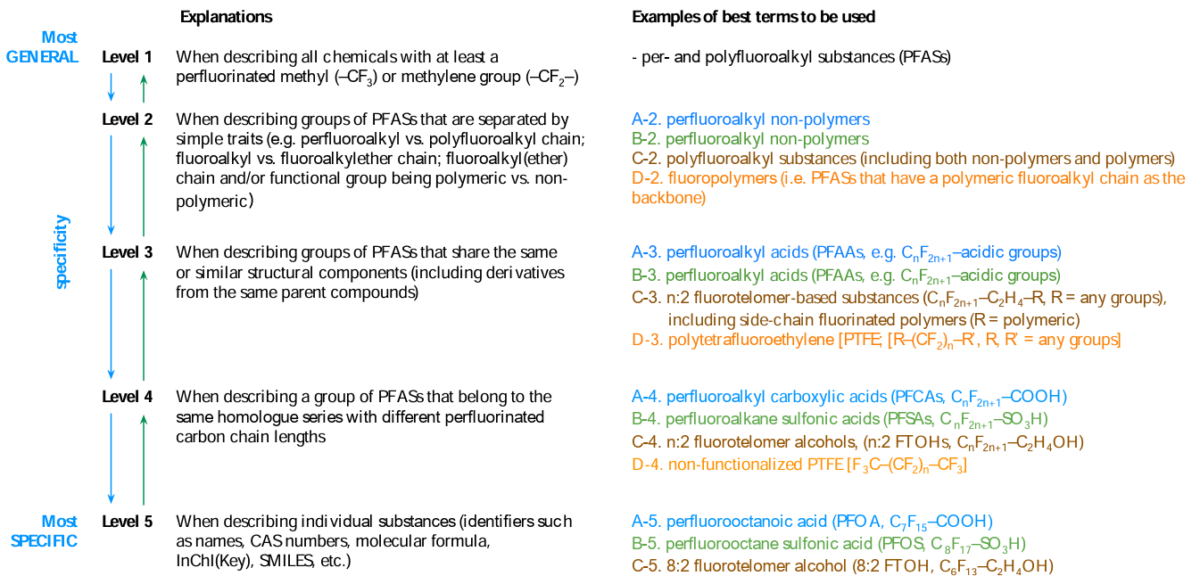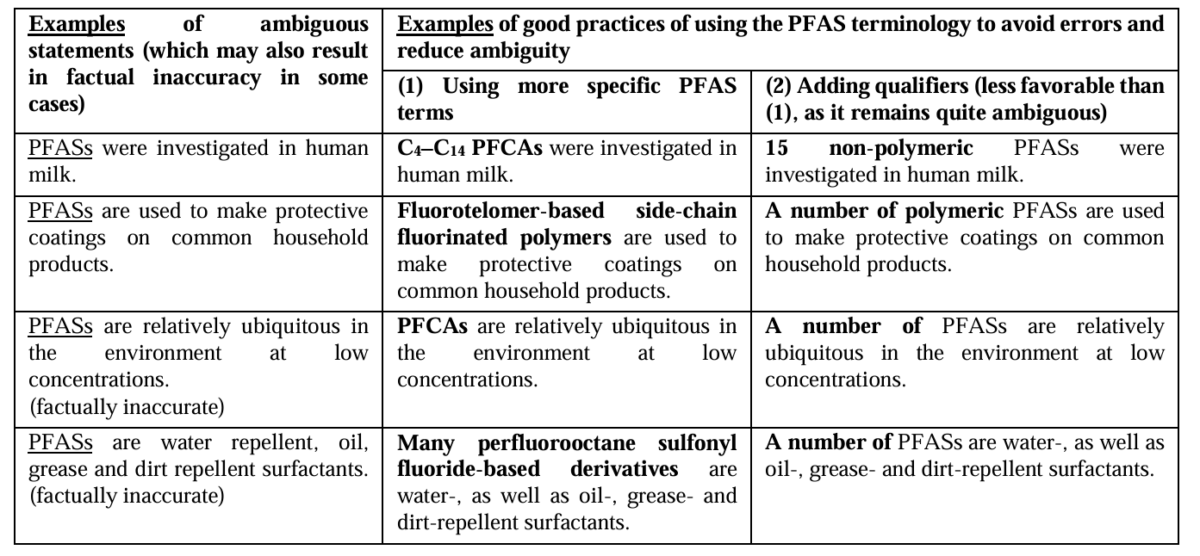Best Practices for Using PFAS Terminology

The Environment Directorate Chemicals and Biotechnology Committee from the OECD prepared a document that may help specialized and non-specialized populations understand PFAS terminology.
Per- and poly-fluoroalkyl substances (PFAS) include thousands of fluorinated chemicals with diverse structures and properties. Researchers, regulators, and industry professionals must use precise terminology when discussing PFAS to ensure clarity and accuracy. However, inconsistencies in classification and terminology often lead to confusion.
You can also read: PFAS Legislation- What’s Next?
By adopting standardized definitions and best practices, stakeholders can improve communication, enhance regulatory compliance, and support scientific research on PFAS and their environmental impact.
Defining PFAS Clearly
The term PFASs broadly refers to substances containing at least one fully fluorinated methyl or methylene carbon atom. However, this definition does not indicate whether a particular PFAS compound poses health or environmental risks. Because PFAS include a wide range of chemical structures, professionals must carefully define whether they are referring to the entire class of PFAS or only specific subcategories.
Many users establish their own working definitions of PFAS based on their specific needs, such as regulatory assessments, toxicity studies, or industrial applications. While these working definitions serve practical purposes, transparency is essential to prevent misunderstandings. Scientists, policymakers, and manufacturers must clearly communicate the scope of their PFAS discussions to avoid ambiguity and misinterpretation.
Best Practices
To improve clarity and consistency, experts recommend several best practices for using PFAS terminology:
- Specify the PFAS Scope
- Indicate whether discussions apply to all PFAS or only specific categories, such as long-chain PFAS, short-chain PFAS, or fluoropolymers.
- Use Precise Chemical Names
- Instead of using broad terms, refer to PFAS compounds by their exact chemical names or group classifications when applicable.

A visual guide to identify the best terms to use for a specific statement with four examples (increasing level of specificity illustrated with same colour within examples). Courtesy of Reconciling Terminology of the Universe of Per- and Polyfluoroalkyl Substances: Recommendations and Practical Guidance.
- Follow Established Nomenclature
- Reference standardized naming conventions from authoritative sources such as the International Union of Pure and Applied Chemistry (IUPAC) or the Organisation for Economic Co-operation and Development (OECD).
- Avoid Ambiguous Language
- Ensure clarity in scientific discussions, policy documents, and regulatory frameworks by defining terms explicitly. Misuse of PFAS terminology can lead to regulatory confusion and hinder effective communication.

Examples of ambiguous statements and associated good practices of using more specific PFAS terminology to refine these statements. Courtesy of Reconciling Terminology of the Universe of Per- and Polyfluoroalkyl Substances: Recommendations and Practical Guidance OECD.
Standardizing PFAS Categorization
Due to the complexity of PFAS structures, experts emphasize the need for a structured classification system. Researchers can categorize PFAS based on chain length, polymeric nature, and functional groups, allowing for better organization and understanding. Additionally, cheminformatics tools can automate PFAS classification, improving accuracy and reducing inconsistencies in reporting.
Future developments in PFAS terminology should focus on:
- Establishing a centralized database for standardized PFAS nomenclature.
- Enhancing cheminformatics tools for automated PFAS classification.
- Improving characterization and reporting of PFAS.
- Expanding research on fluorinated compounds beyond traditional PFAS definitions.
By adopting these strategies, stakeholders can enhance regulatory clarity, improve scientific collaboration, and ensure effective management of PFAS-related issues. Standardized terminology plays a crucial role in advancing research, shaping policies, and protecting public health.
To read the OECD document click here.
